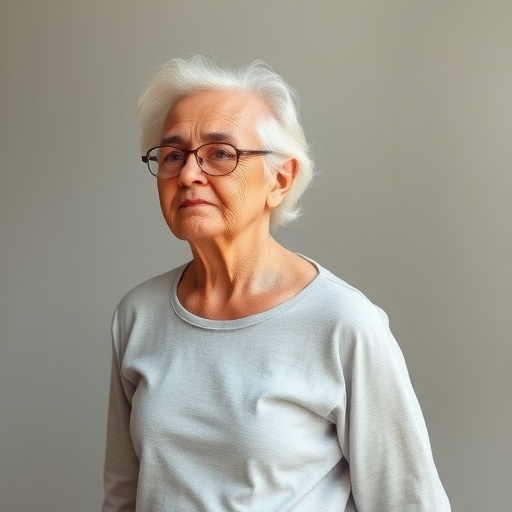In recent years, the intersection of mental well-being and physical health has become an increasingly significant area of study, particularly among older adults. The term “kinesiophobia,” which refers to the fear of movement due to the anticipation of pain, has emerged as a critical factor influencing the overall quality of life. Researchers have sought to understand how this psychological condition correlates with the process of aging and what implications it may have for effective interventions.
A groundbreaking study led by Aydin and colleagues delves into this complex relationship by incorporating a machine learning approach to analyze data from older individuals. Machine learning, a subset of artificial intelligence, allows for the intricate analysis of vast datasets, enabling researchers to identify patterns and draw conclusions that traditional statistical methods may overlook. In the context of this research, the technology provided a sophisticated analysis of the multifaceted factors that contribute to the quality of life in older adults, particularly focusing on kinesiophobia and the concept of successful aging.
The study meticulously gathered data on various dimensions of aging, including psychological health, social engagement, and physical activity levels among older adults. Researchers utilized machine learning algorithms to sift through this data, uncovering valuable insights that could aid healthcare providers in tailoring interventions to improve quality of life. The findings suggest that the fear of movement—stemming from past traumas or chronic pain—can significantly impede an individual’s willingness to engage in physical activity, thereby diminishing their quality of life.
Moreover, the research highlights the dual role of successful aging, which encompasses not only the absence of disease but also the presence of psychological well-being and active participation in life. Successful aging is increasingly recognized as a multidimensional construct, influenced by personal, social, and environmental factors. Through advanced analyses, Aydin and colleagues have shown that embracing successful aging could potentially mitigate the negative impacts of kinesiophobia.
The implications of such findings are profound. By understanding the relationship between kinesiophobia and quality of life, healthcare practitioners can develop holistic approaches that encourage older adults to engage in physical activity safely. For instance, tailored exercise programs could be created, integrating psychological support alongside physical rehabilitation, which would empower older adults to overcome their fears.
Additionally, the study underscores the need for increased awareness of kinesiophobia among healthcare professionals. Traditionally, treatment plans may focus predominantly on physical rehabilitation without addressing the psychological components that discourage movement. This oversight can lead to incomplete care and hinder the recovery processes of aging individuals grappling with fears surrounding their physical capabilities.
On the technological front, the use of machine learning in this research represents a remarkable advancement. Researchers have harnessed this tool to interpret complex interactions within the data, creating predictive models that can forecast the quality of life based on levels of kinesiophobia and successful aging markers. These models can enlighten clinicians about which interventions are likely to be the most effective for different patients based on their individual profiles.
The interplay between mental health and physical activity is often underestimated, yet it plays a vital role in advancing quality of life. The correlation identified by this study between kinesiophobia and aging reiterates the importance of addressing mental health in conjunction with physical health. Those working in geriatrics must embrace a comprehensive approach to care that celebrates the potential for physical activity and psychological resilience among older adults.
Importantly, Aydin et al.’s findings suggest that fostering environments that promote social interaction and community engagement can counteract the effects of kinesiophobia. When older adults are supported in their social endeavors and encouraged to share experiences, they often find the motivation to engage in physical activities that they may have otherwise shunned.
Furthermore, public health campaigns aimed at reducing stigma surrounding aging and physical limitations are essential. Educating both older adults and their families about the benefits of maintaining an active lifestyle can help reduce the prevalent fears associated with movement. Awareness can catalyze a shift, guiding older adults toward embracing physical engagements rather than retreating into inactivity.
Moving forward, this research opens numerous avenues for further investigation. Future studies could look at the effectiveness of specific interventions designed to address kinesiophobia while promoting successful aging. For instance, programs that utilize mindfulness and cognitive-behavioral techniques could be explored to help older adults reframe their perception of movement and pain.
As the population ages, addressing these concerns becomes paramount for health care systems globally. By integrating findings from studies like Aydin et al.’s into public health policy and clinical practice, we can foster environments that not only enhance the quality of life but enable older individuals to maintain their autonomy and dignity as they age.
In conclusion, this study sheds light on the critical relationship between kinesiophobia, successful aging, and quality of life among older adults. The innovative application of machine learning provides a powerful lens through which these complex relationships can be understood, ultimately paving the way for more effective interventions and improved health outcomes in the aging population.
Subject of Research: The impact of kinesiophobia on the quality of life in older adults through a machine learning approach.
Article Title: The effect of kinesiophobia and successful aging on quality of life in older adults: machine learning approach.
Article References:
Aydin, M.A., Yildirim, N., Kizilarslan, V. et al. The effect of kinesiophobia and successful aging on quality of life in older adults: machine learning approach.
BMC Geriatr 25, 811 (2025). https://doi.org/10.1186/s12877-025-06482-8
Image Credits: AI Generated
DOI:
Keywords: Kinesiophobia, Successful Aging, Quality of Life, Machine Learning, Older Adults, Health Care Interventions




